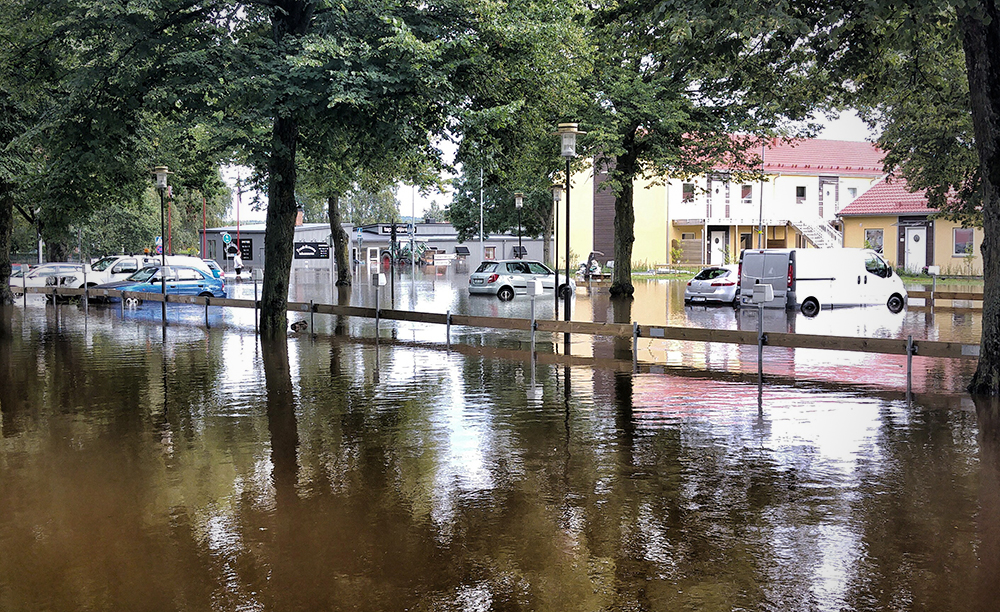"We Swedes need to get our house in order"

Embankments and motorways collapse. Damage from extreme weather events is getting worse while knowledge of how to protect ourselves from them is lagging behind. Johan Silfwerbrand, professor in concrete construction, wants to see more research on climate adaptation.
The autumn's weather events show that the risks of serious consequences are significant, according to the KTH professor. The E6 motorway that broke in Stenungsund, a municipality on the western part of Sweden, or the collapse of the railway embankment in Hudiksvall on the easter part, and flooding in several cities,are some examples.
“We can do a lot to minimize the consequences. It's about the direction we want climate research to take,” he says.
In a study mapping ongoing climate research projects in infrastructure, Silfwerbrand shows that current research is largely focused on reducing emissions and mitigating climate change rather than adapting to it.
“Very unfortunate”
The conclusion of the study - which includes Sweden's major technical universities, RISE Research Institutes of Sweden, the Swedish Transport Administration and the Swedish Association of Local Authorities and Regions - is that a negligible part of the research is about climate adaptation, i.e. measures to reduce the harmful effects of climate change.

In construction technology, he estimates that about five per cent of the projects focus on climate adaptation.
“This is very unfortunate. We Swedes need to get our house in order. Increased investment in climate adaptation would have a direct effect here and now, and strengthen our country against the risk of damage. At least half of the research should focus on climate adaptation.”
Most urgent, according to Silfwerbrand, is research on measures to protect the built environment from flooding. He calls for more scientific activity in three areas: flood defenses against rising sea levels in coastal communities, better construction planning next to rivers, and more effective measures to protect urban stormwater systems during intense rainfall.
“Of course, these measures could be even better and more effective than they are today if more research was done in this area, just as most things can be optimized when they are subject to scientific study.”
Improving concrete recipes
Silfwerbrand has drawn up a list of 12 different proposals for research projects. Most of them are related to concrete.
“Concrete has an important role to play, for example in protecting barriers near seas and rivers. Concrete can withstand wear and tear from water, moisture and wind and is highly resistant to fire.”
At the same time, concrete is a material that has been portrayed as a climate villain through the production of cement as part of the manufacturing process. Globally, cement accounts for 5-8 per cent of carbon dioxide emissions.
Research efforts are being made to replace parts of the cement with industrial waste products. Projects on durability and life extension are also common, allowing emissions to be spread over more years. The cement industry is also working on equipping its kilns with carbon capture.
"We need to save on cement by optimizing concrete recipes and concrete structures, but without concrete I struggle to see how society would function," says Silfwerbrand.
Text: Christer Gummeson

